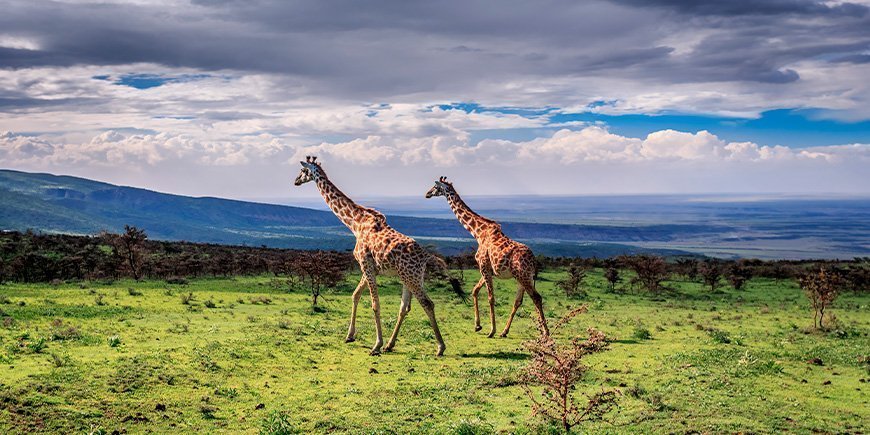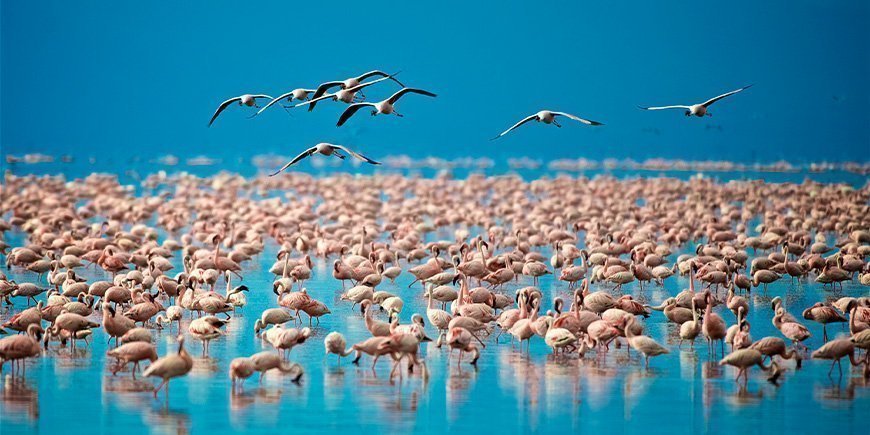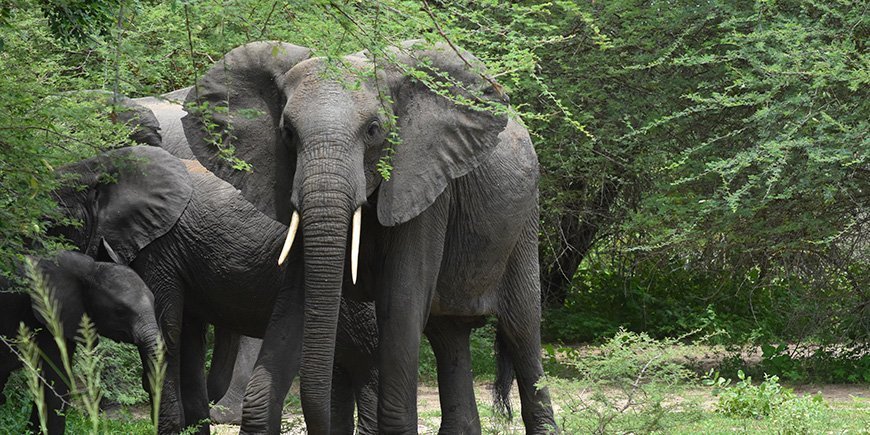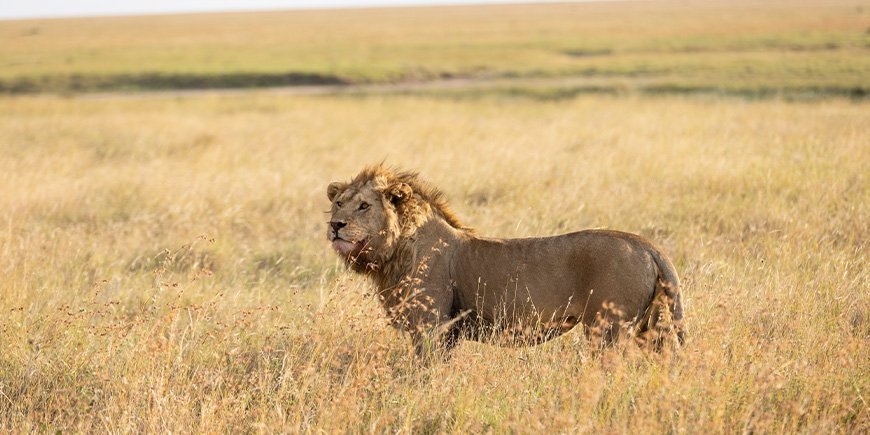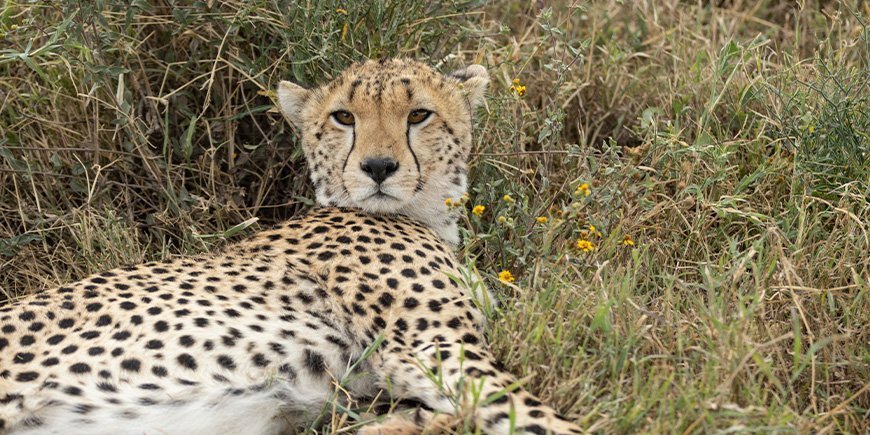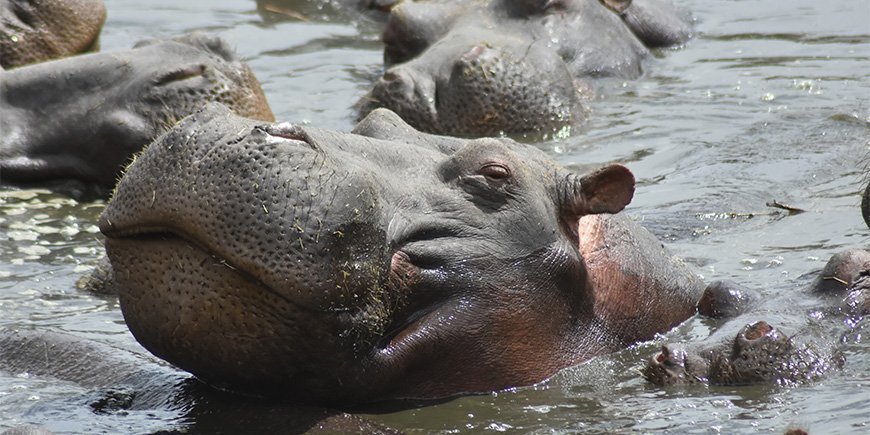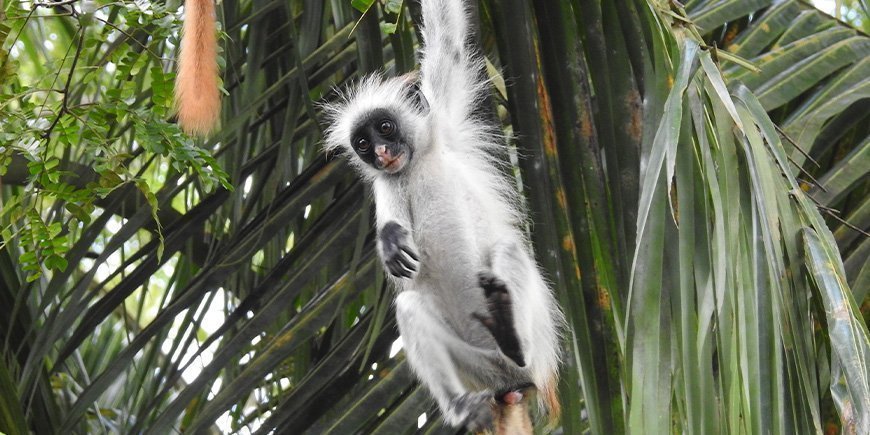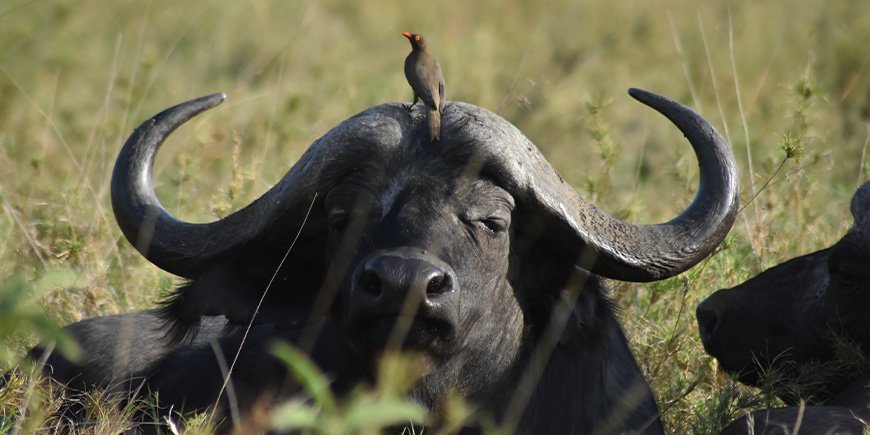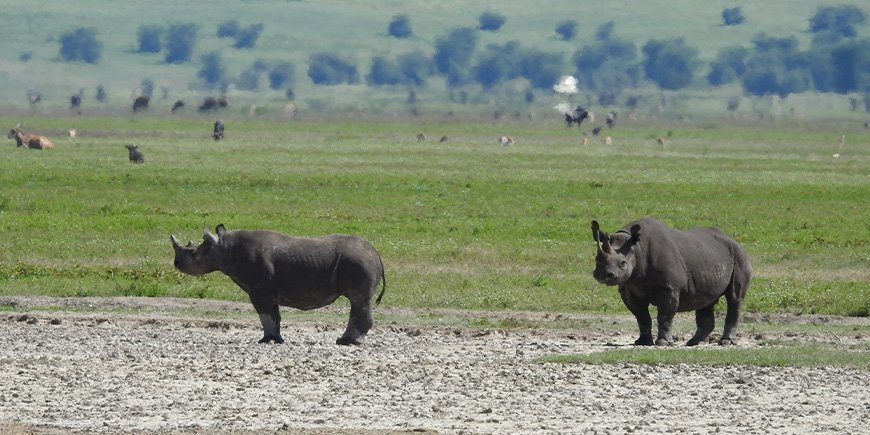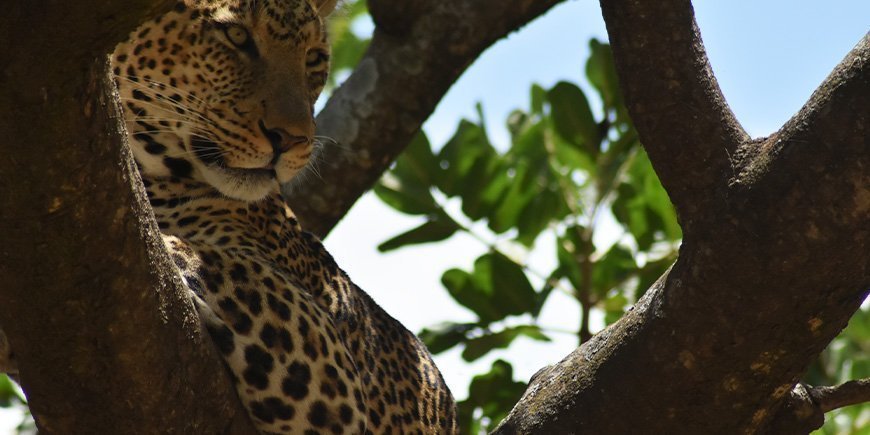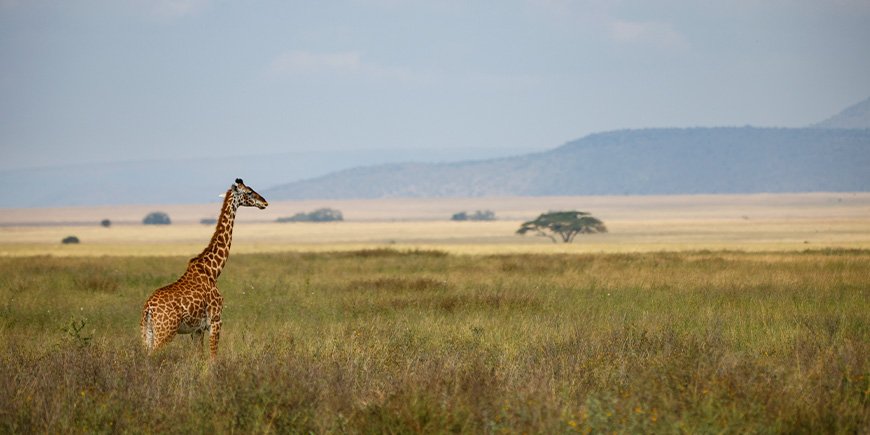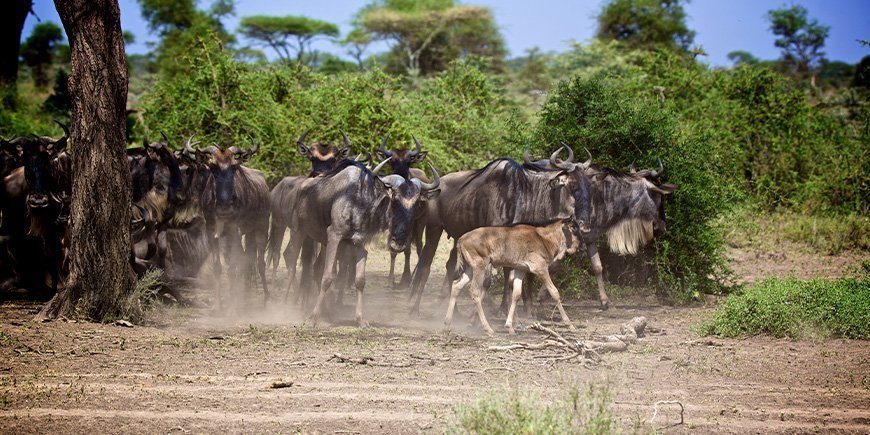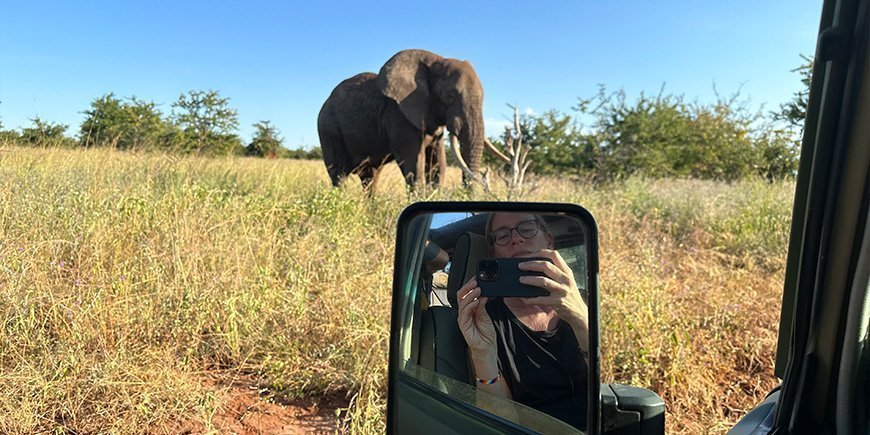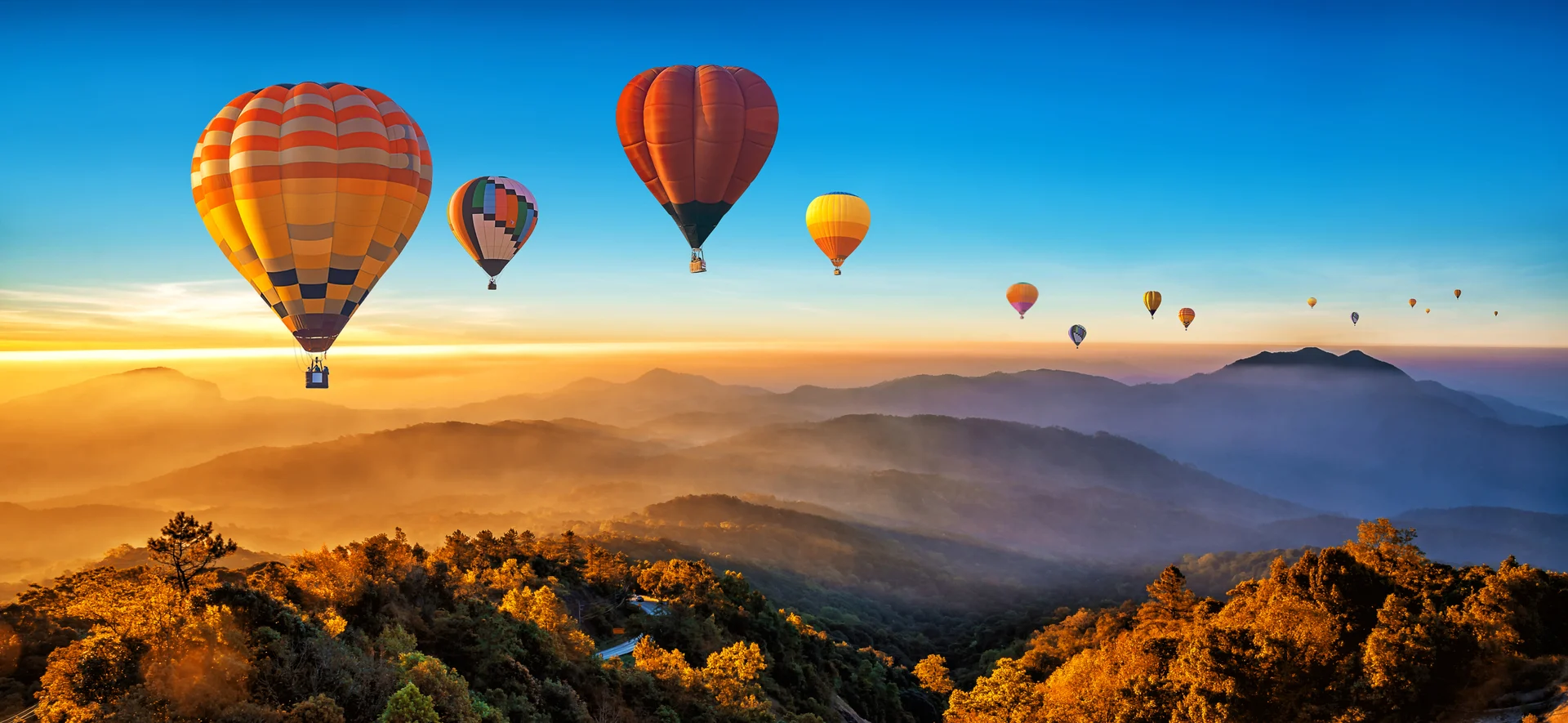Animals in Tanzania
31/03/2024Tanzania is a destination that captures the hearts of nature lovers with its magnificent natural landscapes and wild animal species.
Here, we take you on a tour through Tanzania’s wildlife, where we explore the unbelievable diversity of species that make this country one of the most exciting places in the world to see wildlife.
Tanzania’s diverse wildlife
Tanzania’s geographical location in Africa and varied landscapes form the foundation for unique ecosystems that support a wide range of animal species.
From the open savannah to the overgrown plains of the Serengeti, where the great migration of gnus and zebras takes place, to the dense forests like Jozani Forest, home to rare primates and colourful birds. Tanzania offers a wealth of wildlife that is difficult to find elsewhere.
What animals can you see?
Tanzania’s varied habitats supports an incredible selection of animal species. Here, you can see more than 400 different kinds of mammals and over 1000 different bird species, including some of the most iconic and impressive animals on the planet. In fact, Tanzania is one of the countries with the greatest density of animals by square kilometre in the world.
Here’s a list of some of the most popular animals you can see in Tanzania.
1. African elephant
The African elephant is the largest land animal in the world, and it is famous for its intelligence, its impressive tusks, as well as its family herds, which are led by an older female elephant – the matriarch.
Elephants can communicate across long distances using infrasound, which is sound below the frequencies that humans can hear.
2. Lion
The lion, often called the “king of the animals” is among the most iconic African predators, renowned for its strength and majestic mane.
Lions are the only felines that live in social groups that help each other hunt and raise cubs.
The lion is an endangered species, and in 2023, there were only about 23,000 wild lions remaining in the world, of which roughly 50% have been estimated to live in Tanzania.
3. Cheetah
The cheetah is the fastest land animal in the world, capable of reaching speeds of up to 112 km/h in short spurts when it hunts. The cheetah’s high speed is only possible due to its incredibly flexible spine and large nostrils, which allow for a massive air intake as they run. It also uses its tail to steer.
The cheetah is said to be the only one of the big cats that can spin. Other big cats, e.g., the lion, roar, which the cheetah can’t do.
4. Hippopotamus
The hippopotamus is a large mammal that primarily lives in water, spending most of its day frolicking in the water to stay cool under the African sun.
Despite their heavy-set appearance on land, hippopotamuses are surprisingly fast in the water and can be very territorial and aggressive. In fact, the hippopotamus is considered to be one of the dangerous land animals in Tanzania and Africa simply because it is so territorial, so don’t be fooled by its otherwise playful appearance.
5. Zanzibar red colobus monkey
The Zanzibar red colobus monkey, also known as Kirk’s red colobus, is a subspecies of the red colobus monkey. It only lives on Zanzibar’s main island, Unguja, and one of the best places to spot one is the Jozani Forest. The monkeys are endangered and are said to be among the rarest monkey species in Africa.
They live in groups of 30 to 50 monkeys and primarily eat leaves and seeds, which makes them a crucial part of Zanzibar’s ecosystem, as they help spread seeds.
6. Buffalo
The African buffalo is known of the most well-known and respected animals in Africa. This mighty plant eater is famous for its robust build and huge horns, and as a part of the “Big Five”, it is much sought-after in safaris.
African buffaloes have a remarkable ability to defend themselves against predators. They’re known for their close cooperation within the herd as they protect themselves against lions.
7. Rhino
Tanzania is the home of both the critically endangered black rhinoceros and the more numerous, but still endangered, white rhinoceros. These majestic creatures are easily recognised by their impressive horns and massive bodies. It is also because of the horn that the rhinoceros is endangered. This is because the horn is a hotly demanded item on the black market.
The rhinoceros has a unique behaviour when it comes to its horn. These powerful weapons aren’t just for defending against predators, but they also play a role in social interactions and serve as a tool for digging for water and minerals. Interestingly, the rhinoceros horn consists of keratin, the same substance that makes up human hair and nails.
8. Leopard
The leopard is one of the most adaptable and multifaceted predators in Africa, known for its beautiful spotted fur and unique ability to climb trees. The leopard is a loner that is primarily active at night, when it hunts everything from small rodents to large antelopes using its remarkable sniping abilities.
The leopard’s ability to carry its prey into trees is unique among the big cats. This allows them to hide their meals away from other predators, letting them eat in peace. They can lift prey, which can weigh almost twice as much as they do, up into the branches.
9. Giraffe – Tanzania’s national animal
The giraffe is the tallest animal on land, and with its height of up to 5.5 metres, you are certain to be amazed when you see it on your safari. Even new-born giraffes are taller than most people. Paradoxically, the giraffe’s long neck is too long to reach the ground, so they have to kneel to drink water.
There are four species of giraffe, but the only one in Tanzania is the Masai giraffe, which is also Tanzania’s national animal. You can most often find the giraffes in northern and central Tanzania, such as in the Serengeti National Park.
10. Gnu
If you want to see the gnu, there are millions of them in Tanzania. Gnus are part of the Great Migration, so each year, they travel in herds through Tanzania, briefly crossing the border to Kenya.
Gnus only eat plants and other vegetation. Their travels are affected by the rain, and when the grass disappears, the rain drives the herds to greener pastures.
Are there dangerous animals in Tanzania?
In short, yes. There are dangerous animals in Tanzania.
When you go on a safari, in Tanzania or at our other destinations, you will encounter wild animals that are in their natural habitats. You are on their turf, and we’re just visiting.
However, you’re safe in the safari vehicle.
At the accommodations or wild camps that do not have a fence, you will be accompanied by a Maasai person after dark.
So, although there are dangerous animals in Tanzania, it’s safe to go on safari. The wild animals are used to there being cars around, and they don’t view them as a threat. The professional safari guides have a deep understanding of animal behaviours and the rules of the park, so it is of course important that you listen to their instructions. If you do this, it will be completely safe to go on safari, even though there are dangerous animals in Tanzania.
3 tips for a safe safari
Here are some simple tips on how to make your safari a safe one, including those where you’re observing Tanzania’s dangerous animals.
- Stay in the vehicle during the safari unless otherwise instructed.
- Always follow the safari guide’s instructions.
- Feel free to use binoculars to observe animals at a safe distance.
Experience Tanzania’s nature up close
A safari in Tanzania to experience the country’s rich animal life is a true gift that offers a unique look at the diversity and beauty of nature.
From the majestic “Big Five” to the countless other, less well-known species, Tanzania offers an unforgettable journey into the wildlife of the savannah.
Is there a specific animal you’d like to see? Feel free to get in touch, so that we can help you find just the right tour to give you the best chances of seeing exactly what you’re looking for.
TourCompass – From tourist to traveller
